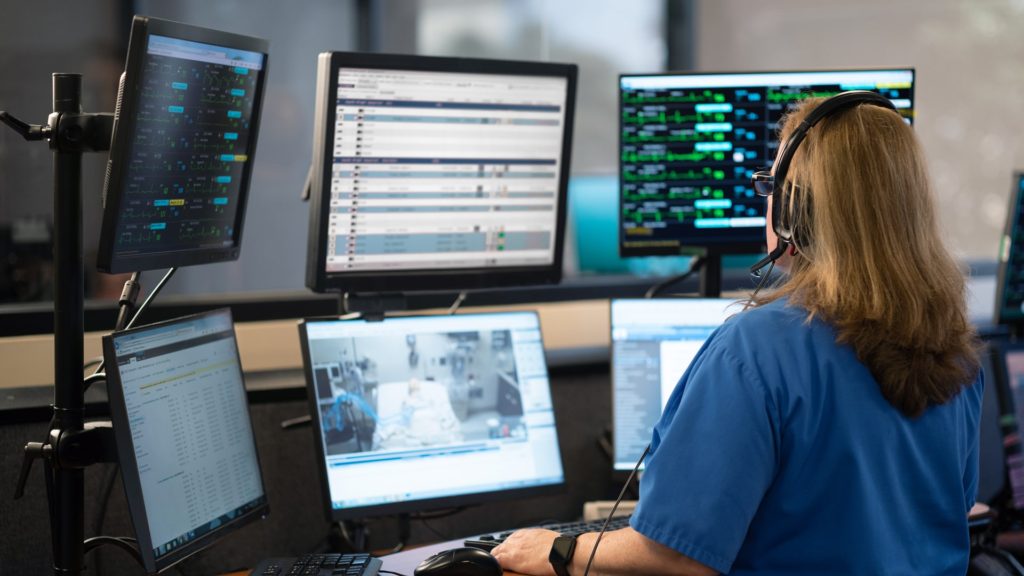 As your Editor reflects on 2023’s BloodOutOfARock versus 2020-2021’s Alcoholic Bender or the ‘new normal’ touted by the Usual Suspects (with 2022 only a burp on the way), she actually sees some Signs of Hope.
As your Editor reflects on 2023’s BloodOutOfARock versus 2020-2021’s Alcoholic Bender or the ‘new normal’ touted by the Usual Suspects (with 2022 only a burp on the way), she actually sees some Signs of Hope.
Having lived through the Digital Health Slough of Despond of 2008-2009 as the marketer for an early telemonitoring company, there are many actions that to the observant are markers that the board is being cleared of the also-rans and never-should-have-beens. They are like dead plants and brush that need to be cleaned out so that new growth can happen. We are cycling through some of them already as we move to a New Reality and winding this up, with some examples.
- Early stage companies still in the red, with promising financials, but needing to get to the next stage, suddenly unable to get even modest funding (an early indicator of funding drought)
- Large companies that can get funding snapping up smaller companies at knock-down rates to fit a ‘vision’. Watch for fill-ins, add-ins, bolt-ons that later are revealed to have taken place ‘just in time’. (And may be sold or spun off later in the cycle.)
- Large companies veering off into lines of business that look like meadows but are minefields–and hiring expensive senior executives who don’t know one or the other but then have to run both at very high levels. They then depart (or are departed) with expensive packages.
- VCs and PEs really snapping the purses shut–and shutting. (The latest is OpenView in Boston, not even much of a healthcare player except for a couple in HIT over a decade ago but a recently participant in a Series B for RPM Optimize Health)
- Public companies moving from party-hearty unicorns to hoarding pens and Post-It notes to locking the doors bankrupt in two to three years. (Cracked SPACs, IPOs, and more)
- Too many players competing with each other with near-identical services in what turns out to be a limited market–and gaining advantage by cutting patient health, privacy, and regulatory corners. (DTC telemental care and drug prescribing)
- Layoffs at companies that over-hired in the boom spreading to larger companies that largely did not, cutting their next generation of leaders in response to Mr. Market and creating internal chaos. (Instigating panic at blue-chips like CVS and Walgreens)
- Stupid (yes) acquisitions being acknowledged and cleaned off the books–none too quietly, but done for survival’s sake. (Somewhere there should be a memorial to Teladoc-Livongo. Sorry, Teladoc.)
- Increased Federal and state regulation of normal business processes. (FTC’s sudden prominence adding to the usual DOJ antitrust pile-on and senatorial posturing)
- A general cleansing of the cant and hype infecting a sector. (Look to the conferences and press releases for changes in language.)
In this Editor’s observation, another latter-stage sign is when C-levels don’t survive management failures and are sent packing. Another is seeing a small company sue a larger one over failed partnerships, usually involving IP or program design theft. This past week had examples of these two, plus examples tracking with the above markers.
Veradigm still minus 2022-23 financial statements, boots and replaces its CEO and CFO. The former Allscripts has failed to file financial statements for full year 2022 and to date in 2023 due to a massive flaw in its financial reporting software adopted in 2021 that affected its revenue reporting going back to then. While it is still trading on Nasdaq despite 14 November and earlier 16 August, 18 May, and 20 March notices from the exchange under Nasdaq Listing Rule 5250(c)(1) (Veradigm release), there still is no resolution about when their statements will be filed with the SEC. The company’s latest move was to force the resignations of CEO Richard J. Poulton and CFO Leah S. Jones, replacing them with two interims. From the board, Dr. Shih-Yin (“Yin”) Ho becomes CEO for six months and Lee Westerfield, CFO of Clearsense, becomes CFO. Mr. Poulton, a 10-year veteran, will receive a $1.6 million severance. Ms. Jones will receive a six-month continuation of salary plus additional payments to “provide business-development related services” which is corporate-speak for paying you to transition to her replacement. The board will search for permanent replacements for the CEO and CFO positions.
According to their announcement, the management changes resulted from “the Audit Committee’s previously disclosed, ongoing independent investigation, which is being conducted by legal counsel and relates to the Company’s financial reporting and internal controls over financial reporting and disclosure controls”. Reading it, Job #1 for the new team appears to be reviewing the fiscal 2023 guidance that was released on 18 September and regaining compliance with the Nasdaq Listing Rule. Veradigm also reiterated that they will have a 2020-22 revenue reduction “relating to certain revenue recognition practices.”
Additional board changes include the chairman, Greg Garrison, as executive chairman and the appointment of Carol Zierhoffer (bio), retired CIO of Bechtel Corporation, as lead independent director. Perhaps Ms. Zierhoffer can help with the conundrum of a software company engaged in vital health and financial information transmitted via practice EHRs and practice management having its own massive accounting software problem derailing them for two years. CFO Dive has more details on the audit and a shareholder suit filed in November.
Update: A Nasdaq panel spared Veradigm’s exchange listing, for now. Mark 27 February 2024 as the date Veradigm is required to provide their 2022-2023 financial reporting to Nasdaq as required under Listing Rule 5250(c)(1). This was reported in Veradigm’s 8-K filing to the SEC on 13 December. Note that Nasdaq’s release states “The Company plans to file its Form 10-K and the Form 10-Qs as soon as possible; however, no assurance can be given as to the definitive date on which such periodic reports will be filed.” (Editor’s emphasis) Stay tuned. Healthcare Dive,
No rescue for direct-to-consumer clear dental aligner provider SmileDirectClub. SmileDirect, which along with Byte (acquired 2021 by dental industry giant Dentsply Sirona), NewSmile, SnapCorrect, and several others market DTC aligners and teledentistry, failed to find a buyer or new financing after its Chapter 11 filing in September. The plan centered around the once-billionaire founders buying the company back, but they could not get their main lender HPS Investment Partners and other creditors owed $900 million, nor new investors, on board.
Heavily advertised SmileDirect IPO’d in 2019 with a valuation of $8.9 billion, but never turned a profit from its combination of DIY and teledentistry. Other drains were a patent fight with CandidCare and multiple patient complaints including jaw damage, migraines from misalignment, and tooth loss. Candid, like Invisalign, now works only through dentists who do the impressions, filings for tooth separation if needed, progressive aligner delivery, and tracking progress over what is typically one year for children, teens, and adults (over 60% of business).
In the FAQs on the lone page on its website, SmileDirect no longer will honor customer contracts for aligners and dental checkups or lifetime guarantees, but continues to demand payment from patients on SmilePay contracts. (Good. Luck. With. That!) The Hill, Fortune, HIStalk 11 Dec. For the teledentistry service The TeleDentists, it is a marketing opportunity to join with Byte in prescribing and providing dentist services for their clear aligners (email promotion). The TeleDentists is also partnering with WebMD Care for consumers seeking care after researching a dental condition. (Release)
(Editor’s note: Having gone through Invisalign as an adult to correct a growing problem with alignment, your Editor cannot conceive of a DIY approach to a complex process that also required a significant amount of daily self-discipline.)
Fruit Street Health sues former partner Sharecare for $25 million. The interestingly named Fruit Street provided its diabetes management program to digital health conglomerate Sharecare as part of Sharecare’s unified virtual health management platform for individuals and enterprises. Starting in 2018, Fruit Street had a business agreement with Sharecare to offer its CDC-recognized diabetes prevention program (DPP) on Sharecare’s platform. Sharecare now has its own diabetes prevention program, “Eat Right Now”, which Fruit Street claims violates the terms of its agreement. The lawsuit was filed in Fulton County, Georgia. Sharecare claims not only that the lawsuit is without merit, but also that Fruit Street owes them $3 million in payments.
Fruit Street was founded in 2014 as a public benefit corporation [explained here TTA 24 Feb] headquartered in NYC by Laurence Girard. It is modestly funded at $35 million. Atlanta-based Sharecare was founded 2018 by serial entrepreneur and WebMD founder/CEO Jeff Arnold with Mehmet Oz, MD, surgeon, TV celebrity, and former Senate candidate. Sharecare went public on Nasdaq in the palmy days of early 2021 via a SPAC with Falcon Capital Acquisition Corp. It broke out of the gate with a $3.9 billion valuation, but like most SPACs it cracked downward within months and shares now trade at an anemic $0.99. In January, current CEO Arnold will be transitioning to executive chairman. Long-time Centene exec and retired president Brent Layton will move from a board director position to the CEO chair (release). MedCityNews, Axios,
Former Walgreens CEO Roz Brewer eyewatering compensation revealed. A final example of our third bullet above is the excellent financial arrangement Ms. Brewer had with Walgreens Boots Alliance. Her package of compensation and stock options awarded by the board was $71 million for about 30 months, which included a $4.5 million signing bonus to lure her from Starbucks, over half a million in moving expenses, and $60 million in three years of compensation. According to the information in The Messenger, a good portion was in stock which fell in value 57% during her time at Walgreens, continuing a trend before her arrival. It was also consistent with an executive termination without cause, which also tied her to non-disparagement and non-disclosure agreements. Was her departure by mutual agreement with the board? That is fairly typical language, but reports in the article attributed the real cause in this statement from a source indicating loss of confidence by the most important man at WBA, Stefano Pessina: “Stefano thought she was a lightweight and unable to do the hard, transformational things he needed her to do.” (Was buying the majority of VillageMD, starting the joint store/practice location plan, buying CareCentrix and specialty pharmacy Shields Health Solutions during her tenure, not quite enough? Perhaps too much spent in a hot market and not enough return, especially by VillageMD on Summit Health and CityMD?)
Her departure and replacement by a healthcare veteran with directly related management and organizational expertise, Tim Wentworth, is yet another example of this particular cycle coming to completion. And now that we’re in the midst of clearing the field, what happens next?
 23andMe wished its breached customers Happy New Year by putting the blame…on them!
23andMe wished its breached customers Happy New Year by putting the blame…on them!

















Most Recent Comments